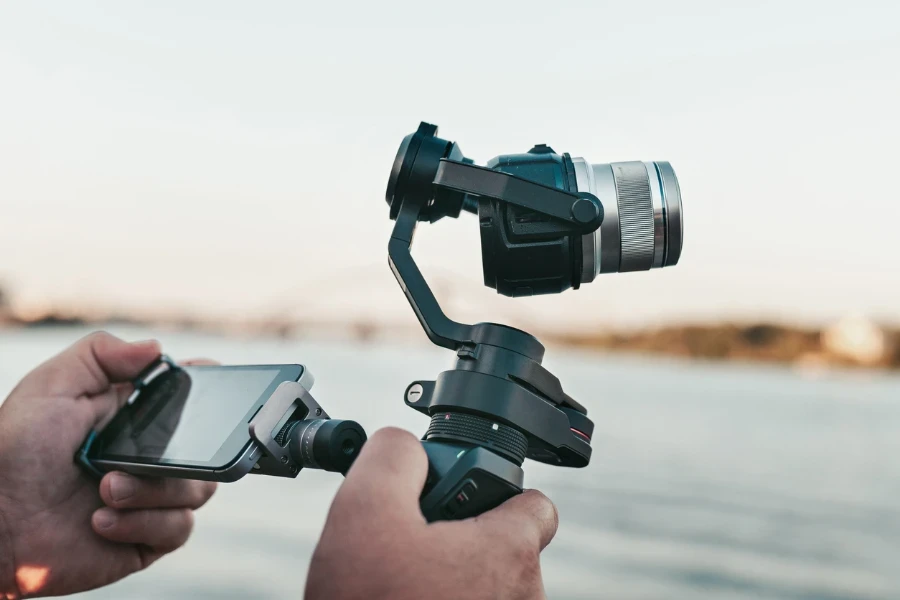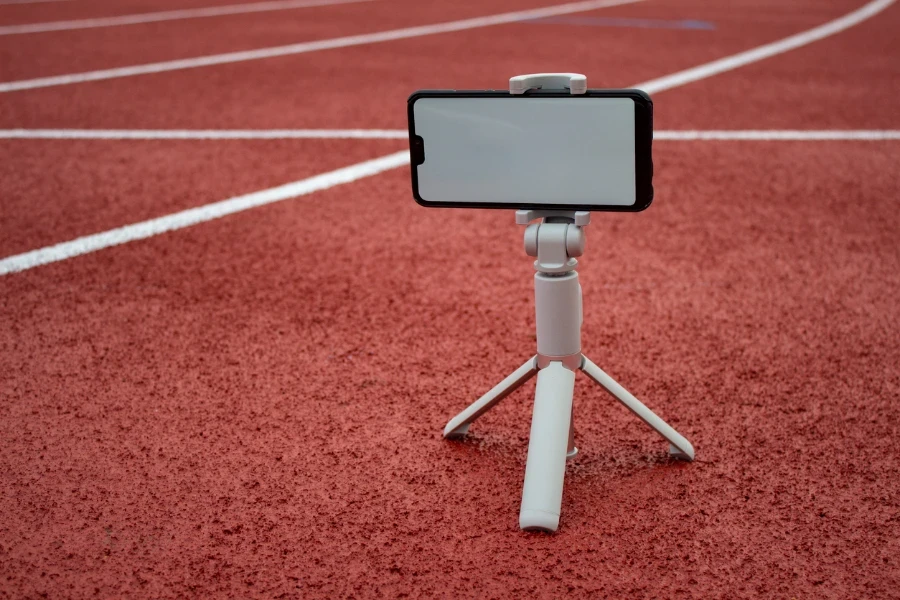In a world where capturing the perfect shot can make or break a brand, tripods have evolved from mere accessories to essential tools for photographers and videographers alike. As we navigate the tripod market in 2024, choosing the right products isn’t just about ticking off specs; it’s about offering your customers the creative freedom and professional stability they need to excel in their craft.
Table of Contents
The evolving landscape of tripod needs
Key considerations for product selection
Why tripods are more than just accessories
Conclusion
The evolving landscape of tripod needs

The tripod market has witnessed significant shifts in recent years, driven by both technological advancements and changing consumer preferences. As online retailers, understanding these shifts is crucial to cater to the diverse needs of photographers and videographers.
The rise of specialized photography

Photography has branched out into various niches, each demanding specific tripod features. Nature photographers, for instance, require tripods that can withstand rugged terrains and changing weather conditions. Astro-photographers, on the other hand, prioritize stability for long exposure shots to capture celestial wonders. Studio photographers, meanwhile, often opt for heavy-duty tripods that can support larger camera setups. Catering to these specialized needs can set a retailer apart in a competitive market.
The influence of technological advancements
The tripod industry hasn’t been immune to technological innovations. Carbon fiber materials, for instance, have revolutionized tripod designs, offering lightweight yet sturdy options. Multi-functional heads have also gained traction, allowing photographers to seamlessly switch between landscape and portrait modes. Additionally, the Peak Design Travel Tripod, a Kickstarter-funded product, raised eyebrows with its compact and versatile design, emphasizing the importance of innovation in this space. Such advancements not only enhance the user experience but also open up new market segments for retailers.
Consumer preferences and trends
Consumer behavior plays a pivotal role in shaping the tripod market. The ongoing debate between portability and stability, for instance, has led to a plethora of products catering to both ends of the spectrum. Material choices, too, have evolved, with some consumers preferring the lightweight nature of carbon fiber, while others stick to the tried-and-tested durability of aluminum. Another trend worth noting is the rise of tripods like the MeFoto BackPacker Travel Tripod, which combines functionality with aesthetics, offering a range of color options. Understanding and adapting to these preferences can be the key to a retailer’s success in 2024.
By delving deep into the evolving landscape of tripod needs, online retailers can position themselves strategically in the market, ensuring they offer products that resonate with the current demands and trends of photographers and videographers.
Key considerations for product selection

In the rapidly evolving world of photography and videography, selecting the right tripod is crucial for professionals and businesses alike. The tripod you choose can significantly influence the quality of your work, and with the myriad of options available, it’s essential to understand the key factors that can make or break your purchase decision.
Size matters: From pocket-sized to studio giants
The size of a tripod is paramount in determining its utility. For on-the-go photographers, a compact tripod that can easily fit in a backpack is ideal. On the other hand, studio photographers might prefer larger, more robust tripods that can support heavier camera setups. According to Manfrotto, understanding the diverse needs of your target audience is essential for retailers to stock a range that caters to all.
Weight and material: The balancing act
The material of a tripod not only determines its weight but also its durability and stability. Carbon fiber tripods, for instance, are lightweight yet sturdy, making them perfect for professionals who are constantly on the move. Aluminum tripods, while heavier, are often more affordable and can still offer excellent stability. As The Verge mentions, the choice between aluminum and carbon fiber can also influence the tripod’s portability and stability.
Stability: The core of functionality
A tripod’s primary function is to provide stability, ensuring blur-free shots. The importance of secure connections and rigid materials cannot be overstated. Tripods with weak joints or those made from inferior materials can compromise the quality of the shot, leading to potential financial and reputational losses for professionals.
Device compatibility: One size doesn’t fit all

With the plethora of camera models available, ensuring that a tripod is compatible with various devices is crucial. Retailers must be aware of the different types and sizes of cameras their customers use. As Manfrotto suggests, matching tripods to device types can significantly enhance user experience and satisfaction.
The right head for the job
The head of a tripod plays a pivotal role in determining the angles and positions a camera can achieve. From ball heads to pan-tilt heads, each type has its unique advantages. For instance, ball heads allow for swift and smooth movement, ideal for action shots, while pan-tilt heads offer precise control, perfect for landscape photography.
Additional features: The icing on the cake
Modern tripods come equipped with a range of additional features that can enhance functionality. Center columns allow for height adjustment, leg locks ensure stability, and some tripods even come with integrated phone mounts, as highlighted by The Verge’s review of the Peak Design Travel Tripod. For retailers, understanding and highlighting these features can be the difference between a sale and a missed opportunity.
In conclusion, for businesses and professionals in the industry, understanding the intricacies of tripods is crucial. From size and material to device compatibility and additional features, each aspect plays a vital role in ensuring the best results. As the tripod market continues to evolve, staying abreast of the latest trends and technologies will be key to success.
Why tripods are more than just accessories

As we delve deeper into the tripod market, it’s essential to recognize that tripods are not merely accessories but vital tools that can elevate the quality of work for professionals and hobbyists alike.
The creative edge
Tripods offer creative flexibility that’s hard to achieve otherwise. They are indispensable for long exposure shots, time-lapses, and other specialized photography techniques. According to Manfrotto, the creative possibilities are virtually endless when you have the right tripod to meet your needs.
The professional requirement
For professionals, a tripod is not a luxury but a necessity. It ensures that the camera remains stable, allowing for sharper images and smoother videos. As highlighted by Digital Trends, shaky hands can ruin a shot, and tripods provide the stability needed to mitigate human error.
The consumer perspective
Interestingly, even average consumers are beginning to invest in quality tripods. With the rise of content creation and social media, a sturdy tripod can make a significant difference in the quality of videos and photos, making it a worthwhile investment for the general public as well.
Conclusion
Summary of key takeaways
In a market that’s as diverse and dynamic as that of tripods, understanding the key considerations for product selection is crucial. From size and material to specialized features, each aspect plays a vital role in determining the tripod’s functionality and, by extension, the quality of work it enables.
Final thoughts on navigating the tripod market in 2024
As we move further into 2024, staying updated on the latest trends and technologies in the tripod market will be essential for businesses and professionals. Whether you’re a retailer looking to stock the most in-demand products or a professional seeking to enhance your toolkit, making informed choices will be key to your success.
And there we have it—a comprehensive guide to navigating the complex but rewarding world of tripods. Here’s to making the right choices and elevating your work to new heights.




